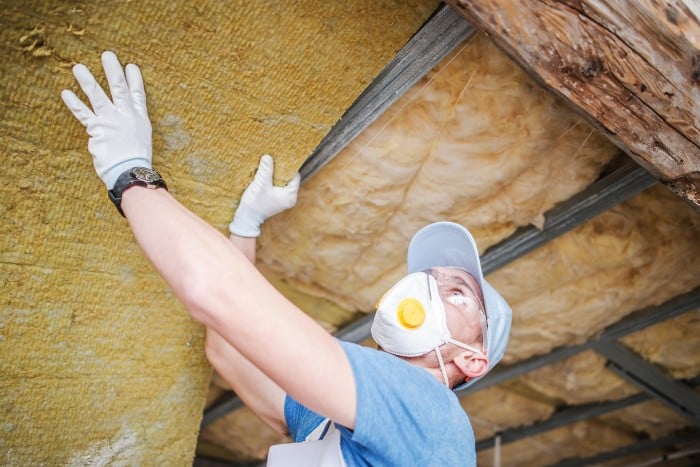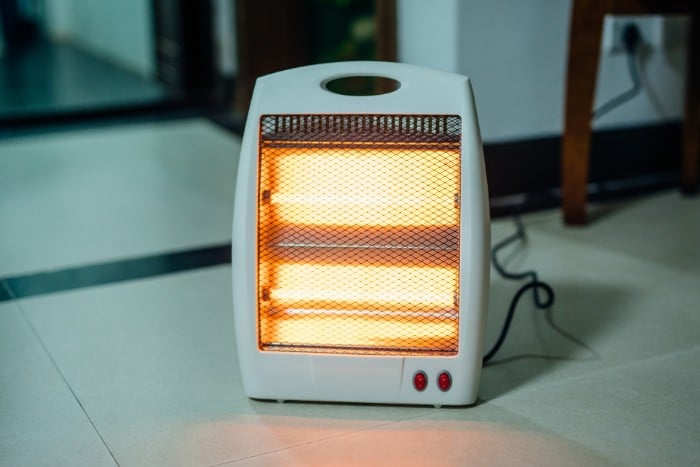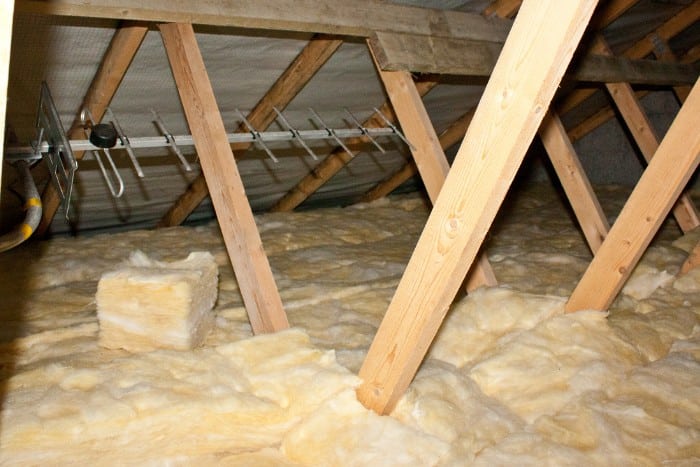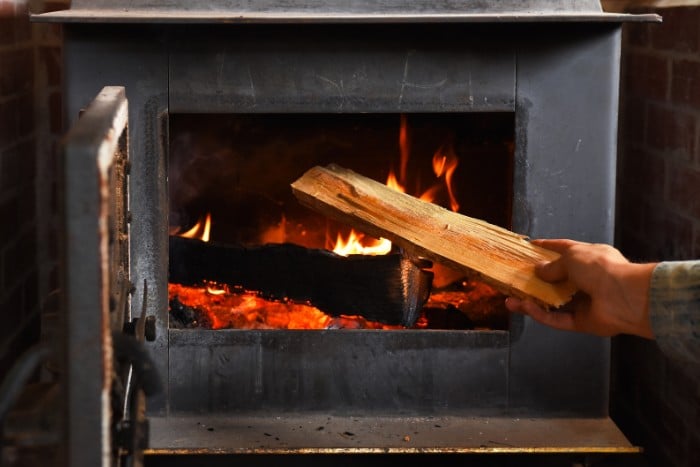The main factor that sends people home early when they’re ice fishing is the cold. Anglers hit the ice, thinking they’re prepared for the elements but quickly find out that they don’t have what they need to stay warm. Some warm clothes and an empty ice shanty often aren’t enough to fend off the cold weather.
In order to heat an ice shanty, anglers need quality insulation as well as a heater. The cold outdoor temperatures and the cold from the ice will quickly fill the inside of the shanty. The heaters and insulation can look like everything from propane heaters to foam flooring.
Depending on your budget and willingness to be creative, you can heat your shanty in various ways.
Heating An Ice Fishing Shanty
Since there are a variety of different types of ice fishing shanties, the heating process will look different depending on what you own.
It’s vital to ensure that your heating source isn’t the only thing that’s working to keep your shanty warm. Insulation is equally as important to keep the temperature within your shanty comfortable.
When combined, these two things will keep you out on the water for as long as you want.

How To Heat a Permanent Shanty?
Permanent ice fishing shanties are hard-sided shelters that are towed behind vehicles and brought out onto the ice.
Permanent shanties are usually used in extremely cold areas where ice can grow upwards of a few feet thick. The metal walls on these shanties will not do an excellent job of repelling the heat on their own.
Permanent shanties trap the cold air from the outside. As a result, it’ll feel the same, if not colder and damper in the shelter than it does outside.
Thankfully, there are a few options and ways to keep yourself comfortable.
1. Heater
There are three primary options for heating a permanent ice fishing shelter. Since you don’t have to worry about moving a heater in and out of the shelter, you can choose a permanent option.
a. Portable Heater
The first and easiest option is to use a portable propane heater. Portable propane heaters are simple and effective to use.
Small propane canisters or full 20-pound tanks can power portable heaters. Portable heaters are generally safe to use inside.
Still, since the permanent shelters are fully sealed, it’s wise to carry a carbon monoxide detector within the shelter to ensure the air quality is safe.
Propane heaters were created to heat small, compact spaces like a permanent shanty. Popular brands like Mr. Buddy sell these heaters for around $100.
Other anglers choose to use heaters that can screw directly into propane tanks. Either option could work. One of the downsides of a portable propane heater is that the moisture buildup can be pretty extreme.
Moisture in a permanent shelter can cause mold and make it feel a bit colder than anglers would like, so keep that in mind.

b. Wood Stove
Another option anglers have is to use a wood stove. Wood stoves require a chimney system to be put in place, but they are some of the most effective ways to heat your shelter.
Plus, there won’t be moisture build-up like there would be with a portable propane heater. Depending on your desired quality, many mini-wood stoves cost anywhere between $150 and $1,500.
These stoves are becoming increasingly more popular due to the growing number of people wanting to live in smaller, compact spaces.
Many of these stoves are 10 inches wide by 20 inches tall, so you don’t need much wood to warm things. You don’t have to worry about any carbon monoxide build-up when using a wood-burning stove.
Plus, you get the sweet smell of woodsmoke the entire time you’re fishing. Many of these wood stoves can also double as cooktops, so if you are hoping for some hot food, they provide an option.
c. Furnace
Another benefit of a permanent ice shelter is that you can place a permanent furnace within them.
These furnaces can run off of generators, batteries, or even propane, depending on your budget and desire for efficiency.
Placing one of these furnaces in your ice house will ensure that things never get too cold. There are 10,000 to 15,000 BTU (British Thermal Unit) furnaces that can be powered by generators.
These furnaces will stay in the shelter permanently and are highly reliable. Companies like Empire make great permanent ice shanty furnaces.
Furnaces are the most expensive ways to heat your shanty, but they are the most effective and efficient.
2. Insulation
Insulation is also vital to have in your permanent ice fishing shanty. Without insulation, you’ll be in a damp and cold shelter for the entirety of your time on the water.
With insulation, a little can go a long way.
a. Foam Board Insulation
Foam insulation is perfect for the floor of your shelter.
If you can prevent the cold air from coming through the bottom of your shelter, you’ll go a long way in protecting yourself from the outside temperatures.
Anglers will also put these foam boards on the walls and ceilings of their shelters as the first or second layers of defense against the cold and wind.

b. Spray Foam
Spray foam is some of the easiest to install and most effective types of insulation on the market. Closed-cell spray foam is the best choice when you’re hoping to insulate your walls and ceilings.
The R-Value, the ability of a piece of insulation to trap heat, of closed-cell spray foam is around 6.5 per inch. Plus, it’s waterproof, so if moisture does get inside the shelter, it’s not going to mold or be ruined.
Spray the spray foam in every single nook and cranny of the shelter before you put on the foam board and materials you choose to use for the walls.
As soon as the heater kicks on, it won’t have to work nearly as hard as it would if you didn’t insulate your shelter.
How To Heat a Flip Over Shanty?
Flip-over shanties are meant for ice anglers looking to cover as much water as possible. As a result, the heating and insulating options in these aren’t abundant.
Generally, the goal for anglers is to keep these setups as light as possible. When the fish aren’t biting, it can be challenging to pack up every piece of fishing equipment and move the house.
However, flip-over shanties make it relatively easy. You keep everything within the sled that the shelter is built into and move along to the next spot.
3. Heater
Your best option for heaters in a flip-over shelter is a portable propane heater. These portable heaters provide plenty of heat for the small space inside a flip-over ice shelter.
You can use a 1-pound propane bottle and attach it to the heater. Make sure you keep it away from the walls of the shelter because the heater can easily burn through them.
You don’t have to worry about any carbon monoxide because there will be pockets of fresh air that are able to get in and out of the shelter, so the air will be recycled enough to keep the heater running as long as you need.
4. Insulation
Insulation can also be a challenge to figure out when you’re using a flip-over ice shelter.
The most common choice that anglers make for these is to bring a couple of foam squares to place on top of the ice.
The cold from the ice can easily seep through boots, so a foam square or two will give you a nice buffer between the ground and your boots.
Foam squares can easily be packed into the flip-over shelter and stored when not in use. The squares keep your load light and still give you a bit of extra warmth.
You can also place a blanket below you on the flip-over seat.
The final option for insulation is to pack down the corners and edges of the flip-over shanty with snow. Not only will this prevent the shelter from moving in the wind, but it will also keep out any blowing snow.
Besides those few insulation choices, make sure you have plenty of warm clothes and extra layers in case the temperatures and outdoor conditions fall.
The walls of the shelter will keep out the wind and any precipitation, but the cold air will easily get through the walls.
How To Heat an Ice Fishing Tent?
Ice fishing tents are generally the most common type of ice fishing shelter used by anglers.
Shelters can fold down and be placed in an ice fishing sled, but when erected, they are able to hold up to six different anglers and their equipment.
Plus, you can do a bit more when trying to heat and insulate them. Ice fishing tents are an excellent choice between a permanent shelter and a flip-over.
5. Heater
You have two different choices when choosing a heater for your ice fishing tent: a wood stove and a portable propane heater. Each heater will do its job and protect you from the elements.
a. Wood Stove
If you can drive out to your fishing spot with a 4-wheeler or your own vehicle, a wood stove is an excellent option for your ice fishing tent.
Many ice fishing companies will sell their tents with a vent in the roof for you to place the chimney of a wood stove.
Anglers planning on spending the night in their tent will often choose to use a wood stove because they can cook on it, and it’s a continuous heat source.
Wood stoves aren’t as portable and require you to have a decent amount of wood, but they do a fantastic job of continually producing as much heat as you need.

b. Portable Propane Heater
By far, the most common option for anglers to use is a portable propane heater.
Some anglers choose to use propane heaters that are reasonably large because ice fishing tents have a decent amount of square footage inside of them that needs heating.
Several Mr. Buddy heaters or a few full-size propane heaters will do the job in an ice fishing tent.
Make sure you come prepared with enough propane to keep that heater running as long as you need. No propane for your heater will send you back home very quickly.
6. Insulation
You won’t be able to insulate your ice fishing tent as well as a permanent ice shanty, but you can do a few things to protect yourself from the elements beyond using a heater.
The more you can do to insulate the tent, the less fuel your heater is going to use.
a. Foam Tiles and Yoga Mats for Flooring
Foam flooring is perhaps the most critical insulation to keep your ice fishing tent warm. The temperature from the ice can overpower the heat that your portable heater is producing.
A few sections of connectible foam flooring will do more to keep your shelter warm than almost all other types of insulation.
The foam flooring is exceptionally light and can be cut to fit the dimensions of the inside of your tent.
Make sure you leave yourself enough room in the corners of your tent to drill holes for your line as well as your fish finders.
Another benefit of flooring is that you can set your gear on it without worrying about water soaking through it and potentially ruining it.
Once you’re done with the floor, pick it up and make sure you dry it out once you return home. As long as you dry out the floor after you use it, these foam tiles will last you for at least an entire season.
Yoga mats are also a useful way to insulate the ground of your ice fishing tent. These mats are easy to roll up, and you can fit yourself and your chair on them.
They’re water-resistant and have a decently high R-Value.

b. Reflectix on the Walls
Reflectix is an amenable type of insulation that can be cut to fit around your ice fishing shelter. Reflectix has a high R-Value and is less than a half-inch thick.
You can also read our guide on insulating your ice fishing shelter.
Putting reflectix behind the support bars in your ice fishing tent is a great way to keep the heat from your body and heater trapped inside. You can put it all over the walls and the ceilings.
Some anglers choose to put velcro on the back of the Reflectix and the walls of the tent, so they can easily attach and unattach it at the end of the day.
It’s relatively inexpensive, and you can transport it on your sled while you’re walking out to your spot.
Conclusion
Heating an ice fishing shanty doesn’t have to be complicated.
As long as you’re aware of how heat is able to escape and cold temperatures can get inside, you can do an excellent job of keeping yourself comfortable.
Do some work and preparation before you hit the ice to ensure things are in working order.
Permanent shanties, flip-over shanties, and ice fishing tents all have their own unique purposes and can keep you comfortable regardless of the weather.
Purchase a nice portable heater or wood stove, and you’ll more than likely be content.
